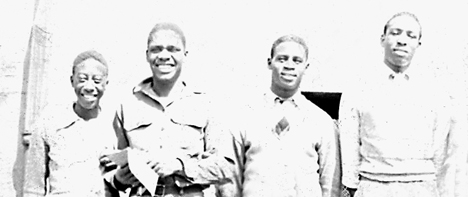

Pedagogical Activism and
Social Justice |
|||||||||||||||||||||
“Yes, Lincoln High School did its job in making us productive citizens in spite of Jim Crow and separate but equal. Thanks Dr. Porter and faculty for a job well done.” |
 Willie Deas |
||||||||||||||||||||
This research project falls within the realm of the “long civil rights movement”—an effort to examine the struggle for civil rights and social justice during the decades before the 1954 Brown v. Board of Education Supreme Court decision. One of the more complex questions that arises in the field of education concerns teachers’ efforts to engage in political and cultural struggle. Black teachers during the 1940s who were members of the NAACP ran the risk of losing their jobs; public statements and actions could have been life-threatening. Even support of unions could cause a teacher to be dismissed, as was the case at Lincoln High School. |
|||||||||||||||||||||
“Dr. Porter and the teachers could not talk openly about civil rights but did so ‘in code.’ They taught us safety and importance of being out in the world. At that time, we were barely allowed to walk on the sidewalks. We knew to step out into the street and come back onto the sidewalk after someone passed, and we were careful in areas where we were likely to be insulted. When the school bus for the white children came by, we got out of the way since the students would throw items at us. We knew that we had to be careful. But Dr. Porter and the teachers used this to teach us so much more: that we could do what anyone else could do. They instilled in us a sense that we were not inferior.” Lucille C. Alexander |
 Lucille C. Alexander |
||||||||||||||||||||
Seventy years of hindsight offers offer little insight for today’s research to ascertain what acts and gestures should have been undertaken by teachers in 1940. Social activism within the classroom and outside of the school take on differing meaning and levels of “impact.” What does become apparent is that Lincoln High School educators were well aware of social injustices, and seemingly many engaged in efforts to instill courage among students as a way to work for civil rights and social justice.
|
|||||||||||||||||||||
“The teachers were very careful with their comments about injustices. Mr. Evert Kershaw, a social studies teacher, addressed issues of civil rights in the classroom, and he posed questions to the superintendent about inequity and equal pay. I think that may have been a reason why his wife was never hired as a teacher after she graduated from college. Social injustice was accepted as a fact for these teachers. They recognized the situation and did not dwell upon those problems.” |
|
||||||||||||||||||||
|
|||||||||||||||||||||
|
|||||||||||||||||||||
|
“There’s no question that Dr. Gilbert L. Porter ran a tight ship to say the least. From 1938 to 1954, he was principal at “the original Lincoln.” I can recall vividly how Dr. Porter would argue with Amos P. Godby, the superintendent of schools, for not furnishing us with up to date books. In fact, I can recall during one of our Chapel exercises that he told Mr. Godby not to send Lincoln any more books from Leon High School with racial slurs and torn pages! Dr. Porter was ahead of his time. His proactive approach to having black youth be all that they could be rubbed off on many if not all of his faculty members as well. I can recall vividly the phrase: ‘you gotta be more than good.’ The winds od change were blowing strongly. It was almost like a battle cry: ‘you gotta be more than good’!” Willie Deas |
||||||||||||||||||||

an institutional member of the International Coalition of Sites of Conscience
Museumofed@gmail.com






